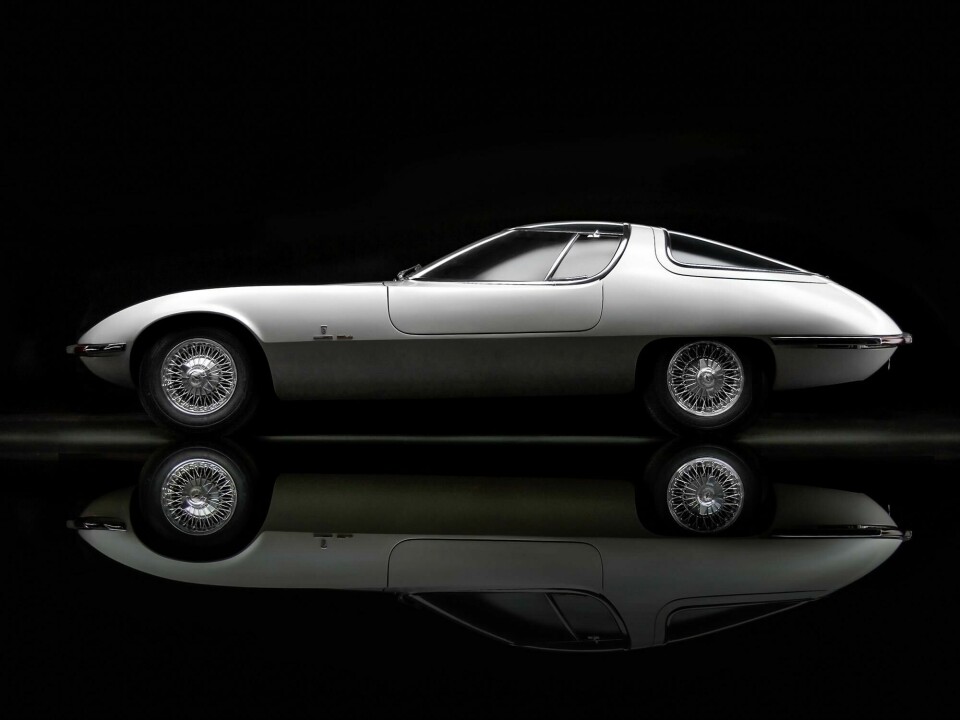
Concept Car of the Week Geneva special: Corvair Testudo (1963)
The Corvair Testudo is a fabulous mixture of slightly misplaced American ingenuity and bravely outrageous Italian style
The Chevrolet Corvair, produced by General Motors from 1960 to 1969, was a compact car intended to counter the increasing popularity of the Volkswagen Beetle. The Corvair was everything other GM offerings of the time were not. It featured a chaste, boxy design with a simple body and glasshouse, and minimal surfacing – no outrageous tailfins or chrome dagmars compromised its compact simplicity.


It also employed a rear-mounted, air-cooled aluminium six-cylinder boxer engine; the only American-designed, mass-produced car to ever feature this kind of drivetrain arrangement. GM design chief Bill Mitchell was keen to expand formats and markets for the Corvair, and sent both Pininfarina and Bertone each a pair of Corvair chassis, with contracts to build a sporty European-style variant of the car.

At Bertone, a young designer named Giorgetto Giugiaro was assigned the task of transforming the humble underpinnings into a modern sports car. His resulting design, a miracle of fast-track fabrication, was conceived and built in only two months. Nuccio Bertone was so proud of the design that he personally drove the car over the Alps to the 1963 Geneva Motor Show, where it became the star of the event.

It was hard to believe what Nuccio Bertone introduced at his stand was underpinned by such humble mechanicals. The chassis on which the Testudo was built was shortened, and covered with a low-slung sports car body that was curvaceous in every way the stubby Corvair was not. And yet, to the trained eye, the Testudo’s design was a transformation of the Corvair design cues, not a repudiation of them.

At the front of the Corvair, the plain vertical fascia and headlight arrangement was surprising in its simplicity, quite a contrast to the baroque theatrics of the typical car of the day. The Testudo maintained this simple arrangement, but placed it at a rakish angle, and simplified it further by employing a single set of headlamps rather than the horizontal quads of the Corvair.

The Corvair’s strongest animating feature was a prominent shoulder line that ran around the perimeter of the car, drawing the eye along its boxy form. The Testudo continued this idea, but dropped the character line down to the waist, where it was made into a subtle fold and incorporated the top of the rear wheelwell and the front and rear bumpers.

The boxy glasshouse of the Corvair was, like many cars of its day, generous, with whisper-thin pillars typical of the era before rollover safety standards were implemented. Giugiaro transformed this element of the design by designing a glasshouse with an enormous hinged canopy that created a cockpit-like atmosphere, and a curved glass hatchback at the rear.

The only roof pillar to speak of was placed at the B-pillar position, but was more like a roll bar that also contained ventilation for the rear-mounted engine and the hinging mechanism for the glass canopies front and rear. The line of this bold pillar was integrated into the front fender, drawing the eye up from the headlights, over the front wheels and up around the cockpit canopy in one sweeping motion.

The Testudo had the appearance of two shells fitted together – the upper one curved, the lower one less so. This gave the car its name – Testudo is Italian for turtle, as the car bears a faint resemblance to the languid reptile, especially from the rear views. But the choice of names seems ironic for a sports car, to say the least.

The interior of the Testudo was a study in masterful mid-century Italian modernism. A pair of black bucket seats rose from the floor, and curved in concert with the roof pillars, creating a line that swept up like a wave from floor to canopy. The steering wheel was broad and rectangular, with clever leather grips at the sides. The IP and centre stack were a one-piece boomerang shape, with the instruments located on the stack and ignition, controls, and choke located behind the steering wheel.

The Testudo won wide acclaim for its design, but was ultimately shelved as other GM projects were to take precedence. The Testudo also had the misfortune to be introduced in 1963, one of the great years for American sports coupes. The new generation split-window Corvette was introduced that year, as was the Buick Riviera and the Raymond-Loewy designed Studebaker Avanti. The Corvair’s own design team was also working on sporty Corvette-like variants called the Monza GT and SS, which also owe a certain debt to the Testudo.

The Testudo’s ultimate realisation would occur in the cars its design influenced. The Lamborghini Miura and Alfa Romeo Montreal – both Bertone products – and the Ferrari Daytona have design elements descended from the Testudo. And Tony Lapine, the late, great Porsche designer, once stated that his celebrated design for the Porsche 928 was highly influenced by the Testudo.

As for the car itself, it remained in Bertone’s collection until bankruptcy forced liquidation in 2013. It was then sold at auction for €336,000. It remains in private hands.
Bertone, the design carrozzeria that produced the Testudo, is now sadly gone, living on only as a design consultancy, and in the memory of its designers, engineers and coachbuilders, and of course automotive enthusiasts, who cherish its legacy of design and engineering innovation.





